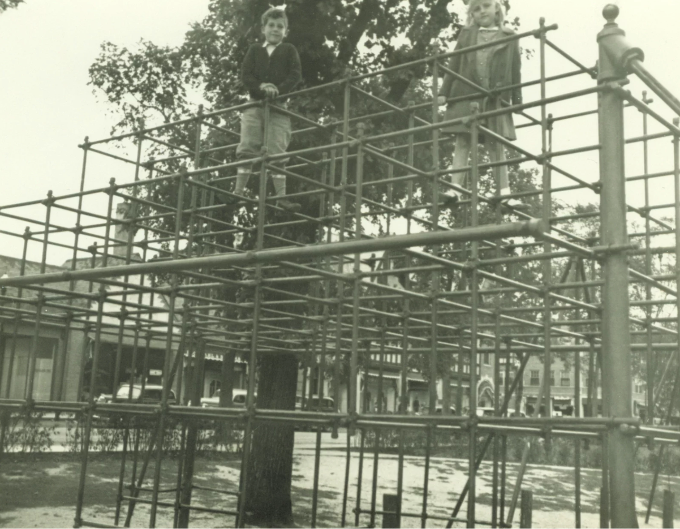July 12, 2024
Teaching
Ideas can take generations to take hold. And when they do they're often used in ways that the person who first did the ideation wouldn't recognize.

Hinton’s original jungle gym, pictured here in the 1930s at the Horace Mann School before it was moved to the Winnetka Historical Society. (Courtesy of Winnetka Historical Society)
Charles Hinton was a British mathematician, who in the late 1800s, was intrigued by the fourth dimension and how to teach about it to disinterested children. He also had interests that were considered ""alternative"" in his time, such as polyamory. Convicted of bigamy he was forced to move his young family to Japan, where he found work teaching.
There he pursued his interest in the fourth dimension. He made his children a series of stacked bamboo cubes, labeling the rods in all three directions, marking the junctions with X, Y, and Z coordinates. Then he attempted to turn these stacked cubes into a game. He would shout ‘X2, Y4, Z3 — go!', expecting all the kids to race each other towards the correct coordinate. His son Sebastian later reported that the spatial concepts Hinton tried to teach were boring, but that the cubes themselves were really fun to climb and swing on.
But the concept of a ""jungle gym"" didn't take off until the early 1920s. By then the junior Hinton was working as a patent lawyer in Winnetka, Illinois. At a dinner party he described his father's climbing structures. At this time Winnetka was eagerly exploring the educational philosophy of John Dewey, which called for “whole child education.” This meant not just teaching reading, writing and arithmetic, but also how to integrate physical activity into the curriculum.
One of the dinner guests was the superintendent of the Winnetka City Schools, Carleton Washburne. He told Hinton, “We need to build this in the schools”. The patent for ""JungleGym Inc"" turned 100 last year.
Article: Inside the Weird and Delightful Origins of the Jungle Gym
Inspiration




